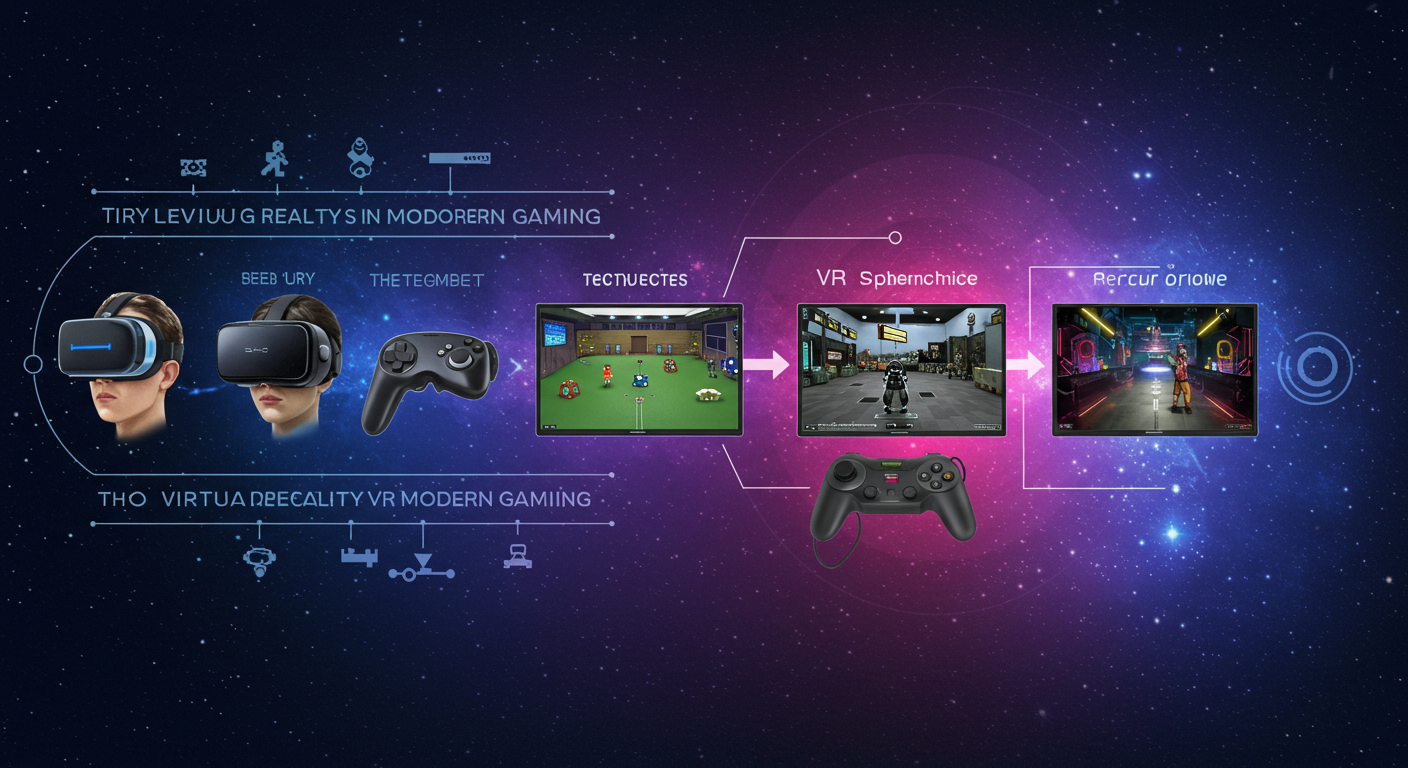The Evolution of Virtual Reality in Modern Gaming
1. The Beginnings of Virtual Reality
Virtual reality (VR) has its roots in the early 1960s when computer scientist Ivan Sutherland created the first head-mounted display system called the “Sword of Damocles.” This device was rudimentary, offering primitive graphics but laid the foundation for future advancements. As technology evolved, the concept of immersive experiences grew, influencing a variety of fields, including gaming.
2. The Influence of Early Gaming Technologies
In the 1980s and 1990s, gaming technology saw significant development with the introduction of arcade games like “Durascope,” which utilized 3D graphics. In 1991, Sega introduced a VR headset for its arcade games; however, limitations in technology prevented the widespread adoption of VR in gaming. These early attempts were critical in shaping the vision of fully immersive gameplay that developers sought to achieve.
3. The Resurgence: Early 2000s to 2010s
The mid-2000s marked a period of renewed interest in virtual reality, largely due to advancements in graphics processing and display technology. The launch of devices like the Nintendo Wii in 2006 demonstrated the market’s appetite for innovative gaming experiences. The turning point came in 2012 when Oculus VR launched a Kickstarter campaign for the Oculus Rift, igniting a virtual reality renaissance. It raised over $2 million, attracting significant attention and investment to the VR space.
4. Technological Advancements Driving VR Forward
The evolution of VR technology was driven by several key factors:
-
High-Resolution Displays: Early VR systems suffered from low-resolution screens that caused significant motion blur and discomfort. The introduction of high-definition displays (hMDs) improved clarity and immersion, making virtual environments more realistic.
-
Head Tracking Technology: Accurate head-tracking technology enabled players to look around their virtual worlds naturally. Gyroscopes, accelerometers, and external tracking systems contributed to seamless gameplay experiences, allowing gamers to physically interact with their surroundings.
- Motion Controllers: The advent of motion controllers, such as the PlayStation Move and the Oculus Touch, allowed players to interact with VR environments intuitively. These tools enhanced the sense of presence and agency within virtual spaces.
5. The Role of Major Players in VR Gaming
As VR gained traction, major players in the gaming industry began to invest heavily in the technology:
-
Oculus (Facebook): After acquiring Oculus VR in 2014, Facebook focused on making VR accessible to millions with the release of the Oculus Rift and later the more affordable Oculus Quest series. Its integration with social media platforms has pushed boundaries on collaborative gaming.
-
HTC Vive: The HTC Vive, released in 2016, provided a sophisticated room-scale VR experience that allowed players to move around physically within their gaming spaces. This aspect attracted developers aiming to create more immersive experiences.
- Sony PlayStation VR: Launched in 2016, PS VR brought VR gaming to a broader audience, especially console gamers. Its extensive library of games, including popular franchises, helped popularize VR among mainstream players.
6. Diverse Applications of VR in Gaming
Virtual reality in gaming has expanded far beyond traditional action titles. Developers have begun to explore various genres:
-
Simulation Games: VR has revolutionized simulation games, such as “Microsoft Flight Simulator” and “Beat Saber.” These titles leverage VR’s ability to replicate real-world scenarios, offering immersive training and entertainment experiences.
-
Adventure and Role-Playing Games (RPGs): Immersive RPGs like “Boneworks” and “The Walking Dead: Saints & Sinners” allow players to step into richly detailed worlds, interact with characters, and make choices that influence outcomes in ways that traditional gaming cannot replicate.
- Puzzle and Party Games: Casual titles such as “Job Simulator” and “Keep Talking and Nobody Explodes” introduce fun and collaborative elements, using VR mechanics to enhance player engagement.
7. The Impact of VR on Game Development
The rise of VR has transformed not only how games are played but also how they are developed. Creative studios are now building games from the ground up with VR in mind, leading to unique gameplay mechanics and storytelling techniques. Enhanced storytelling through immersive narratives has enabled game designers to explore emotional depth and connection with players.
8. The Challenges Facing Virtual Reality Gaming
Despite its rapid evolution, VR gaming faces several hurdles:
-
Cost Barriers: High-quality VR systems can be prohibitively expensive, limiting their accessibility to a broader audience. While standalone headsets like the Oculus Quest have reduced costs, quality systems still require significant investment.
-
Motion Sickness: VR experiences can induce discomfort and motion sickness in some players due to mismatches between visual and physical movement. Developers are increasingly focusing on creating comfortable experiences to mitigate these issues.
- Content Availability: For VR to thrive, a consistent pipeline of quality content is essential. Though many developers are creating innovative titles, the industry’s growth hinges on sustained investment in VR-specific games.
9. The Future of VR in Gaming
As technology continues to progress, the future of VR gaming looks promising:
-
Augmented Reality (AR) Integration: The line between AR and VR is beginning to blur, with systems like the Microsoft HoloLens showing that mixed-reality experiences hold immense potential in gaming, entertainment, and training.
-
Cloud Gaming: With the rise of cloud gaming services, players may access high-quality VR experiences without the need for expensive hardware, bringing immersive gaming to a larger audience.
- Social Experiences: The future of gaming will likely revolve around social interactivity, enabling players to engage in shared virtual experiences, fostering a sense of community previously lacking in traditional gaming environments.
10. Conclusion
The evolution of virtual reality in modern gaming illustrates a landscape that has transformed from niche experimentation to a burgeoning industry. With the convergence of advanced technologies and innovative game designs, VR has opened new worlds for exploration and interaction, and as it continues to advance, it promises to redefine the gaming experience for future generations.




